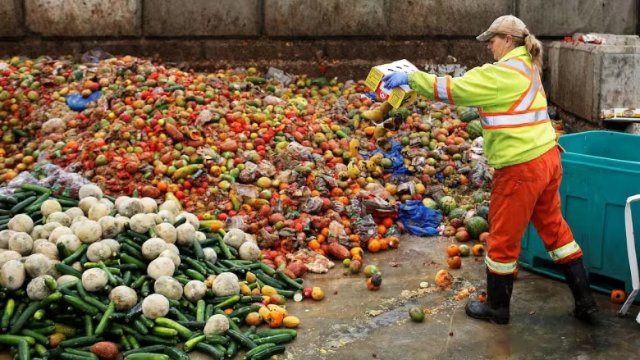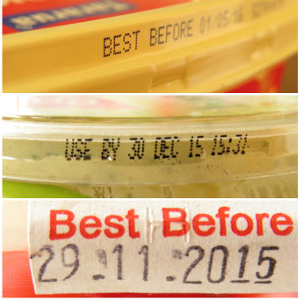We’ve posted what we thought were informative, myth-busting explanations about how Best Before dates work. But it seems the message isn’t getting through. A new report reveals that many folks are throwing away food that they could eat safely…
 More than 40 percent of the food produced in Canada (and the US, by
More than 40 percent of the food produced in Canada (and the US, by
association) is wasted: Thrown out at the farm gate, the wholesale
level, by the supermarket or in your own household garbage.
What it is
The 2023 Consumer Food Insights (CFI) Report from Purdue University’s Center for Food Demand Analysis and Sustainability reveals that many folks are still using Best Before dates on food improperly.
More importantly, the survey showed that abiding confusion over Best Before dating is contributing significantly to food waste.
What they did
A national US survey asked more than 1,200 average people about their food spending habits, consumer satisfaction levels, values related to food and nutrition, support for agricultural and food policies, and trust in information sources.
What they found
Lead author of the report, Joseph Balagtas told Food Safety News: “Over half of consumers associate ‘best if used by’ and ‘use by’ dates with food safety, while more than 30 percent link these labels to food quality.” Balagtas also pointed to ‘the lack of an official standard for food date labeling in the U.S., contributing to the mix of responses regarding their meaning’.
The takeaway
“One potential fix to misinformation is for the government to set standards for food date labels to help inform consumers what is and is not safe to eat to help reduce food waste in the US.” Balagtas expresses hope.” The recently proposed Food Date Labeling Act is an attempt to achieve that goal.”
A refresher…
Time, obviously, for another refresher on just what food dating labels really mean.
First, lets’ look at Expiry dates. These are absolute dates by which food products should be sold or taken off the shelves and disposed of. Beyond their Expiry Date, products are deemed unwholesome; unfit for consumption.
Then there are Best Before dates. Best Before dates indicate the amount of time foods can be expected to maintain an accepted minimum level of quality. The important thing to remember is, foods may change a little in colour, texture or flavour past their Best Before date. But they are not unwholesome or dangerous to eat.
Following along that path…
You can save a lot of dough – especially on products such as meat – by scanning the refrigerator and freezer compartments for ‘clearance’ items. I love to come across a lovely cut of beef or chicken that’s wearing a big orange ‘Enjoy Tonight’ label. These items are usually up to 50 percent of the sticker price! I buy more than I need for ‘tonight’, and immediately stick the rest in the freezer when I get home. As long as you freeze the product the day you get it home, and use it the day you take it out of the freezer, you’re fine. Probably, better than just ‘fine’.
Evaluate other products according to what you know about them. I like to use Chocolate as an example. Chocolate and choco-confections are rarely taken off the shelves and disposed of. That’s because chocolate is pretty resilient, and has a pretty long shelf life. I know for a fact that some supermarkets, and especially drug and department stores, take leftover boxed chocolates and related items off the shelf the day after Christmas. And bring them back out just before Valentine’s Day.
I’ve seen some chocolates, sold as fresh, that looked like a whole crew of Egyptian Priests had been working on them: Dry, with that ‘dusty’ grey coating on them that means they’ve been in circulation for months longer than their ‘Best Before’ period. And they smell funny by then, too. That doesn’t mean they’re unsafe. Just – maybe – unsavoury. And they shouldn’t be sold. Thing is, you can’t see inside the box until you get them home.
Same goes for other products that are packaged and sealed.
With fresh fruits and veggies, on the other hand, it’s obvious whether they’re fresh or aging. You can see for yourself whether they’ve passed their Best Before threshold. Pick the freshest examples of whatever produce items you want and let them ripen at home, until you want to use them. Don’t buy them dead ripe and then be surprised that they go bad before you get the chance to use them!
Anyway…
Be aware of what ‘Best Before’ really means. Buy the freshest produce items you can find. Cash in on ‘Enjoy Today’ deals. Check the ‘manufactured on’ dates for candies and confections.
You’ll be stretching your food budget, getting a better class of food, and not being ripped off by heavily preserved, superannuated packaged goods. And you’ll find you’re throwing out a lot less food!
~ Maggie J.

